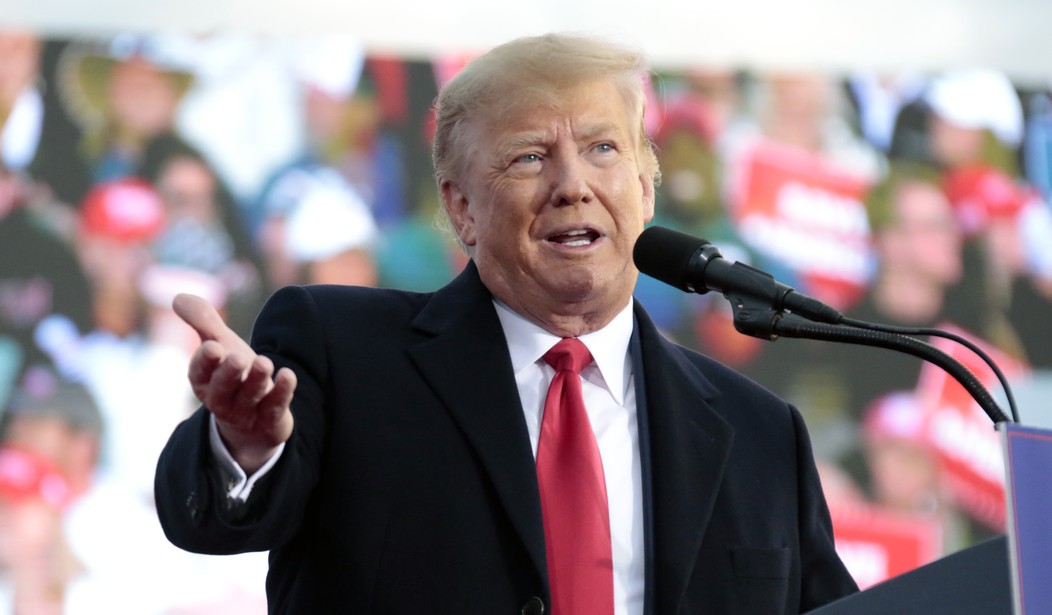Is that what Donald Trump actually claimed? That’s not quite what he told Sean Hannity last night in which he defended his retention of previously classified documents. In the exchange, it sounds more like Trump meant intent rather than simple thought. The act of taking the material with him to Mar-a-Lago shows his intent to declassify, Trump argued, and that doesn’t require a process.
It’s still wrong, but it’s not as ridiculous as first reported — although to be fair, first reported by taking Trump’s use of “thinking” at its plain meaning:
“Is there a process — what was your process to declassify?” Hannity asked.
“There doesn’t have to be a process, as I understand it. You know, there’s — different people say different things, but as I understand there doesn’t have to be,” Trump said. “If you’re the president of the United States, you can declassify just by saying it’s declassified. Even by thinking about it, because you’re sending it to Mar-a-Lago or to wherever you’re sending it.”
“And there doesn’t have to be a process. There can be a process, but there doesn’t have to be. You’re the president, you make that decision. So when you send it, it’s declassified. I declassified everything,” Trump continued. “Now, I declassified things, and we were having a lot of problems with NARA. You know, NARA is a radical Left group of people running that thing, and when you send documents over there, I would say there’s a very good chance that a lot of those documents will never be seen again.”
Pretty clearly, Trump is talking about intent rather than Khanian mind power from Star Trek. Nevertheless, it’s still wrong, and for obvious reasons. Classification applies to information no matter who uses it and why. Declassifying that material requires a process by which everyone knows what the current classification is. That requires a process that notifies all potential users and all storage centers for that material of the status change and the new parameters for who can access it and when.
Bear this in mind, too: not all declassified material is necessarily published or widely disseminated. That is one reason why declassification requires some formal work, regardless of the plenary authority that orders it — including some verifiable record of the order itself to declassify. How else do all of the downstream custodians of this information know to reclassify it? And how to store it, what access is allowed, and so on?
Trump’s claim left Republican senators less than impressed, too:
Asked about Trump’s claim on Fox News that he could simply declassify documents by thinking about it and there’s no process for him to follow to do that, Senate GOP Whip John Thune told CNN there’s a process for declassifying documents.
“And I think it ought to be adhered to and followed. And I think that should apply to anybody who has access to or deals with classified information,” Thune said.
“I think the concern is about those being taken from the White House absent some way of declassifying them or the fact that there were classified documents removed — without sort of the appropriate safeguards,” the South Dakota Republican continued, adding, “I think that is what the Justice Department is getting at.”
Sen. Thom Tillis, a two-term Republican from North Carolina who sits on the Senate Judiciary Committee, told CNN that he believes there’s a process that must be followed by a President to declassify the records.
Even Lindsey Graham demurred on endorsing mere intent as sufficient:
Sen. Lindsey Graham, a South Carolina Republican and top Trump ally, also dismissed the former President’s claims. “The process is probably more complicated than that,” he said of Trump’s claim that he could declassify anything by thinking about it.
Intent may well matter when it comes to prosecution for mishandling documents — assuming that happens at all. That becomes a mitigating factor, however, rather than a good legal defense on the charge itself. The Department of Justice itself relied heavily on intent for mitigation when it became clear that Hillary Clinton had not just mishandled classified material but also allowed its transmission through her unsecured and unauthorized e-mail server. To some extent, it sounds like Trump made a clumsy attempt to invoke the Hillary Rule regarding classified material with this claim, arguing that he never sought to make illicit use of what he had assumed he had declassified tacitly.
But intent doesn’t work for the actual declassification process. It’s far too complicated and involves too many players to leave those decisions up to the whims of declassifiers, and it also leaves no room for political accountability for bad outcomes from such declassification. We need records for those decisions for a number of reasons, which outweigh the convenience of presidents, both sitting and outgoing.
Update: There seems to be some confusion between authority and action among readers and some on social media. I agree that the president has plenary authority to declassify any material — at least, US material — as he sees fit. However, there has to be a record of that declassification. The producers and users of that material have to have some reliable notification of the change. The decision to declassify can be as whimsical as a president desires, but there has to be an overt action involved or the material remains in its original status — for him/her and everyone else.
That, by the way, is exactly what Trump’s hand-picked special master told Trump’s legal team yesterday.








Join the conversation as a VIP Member